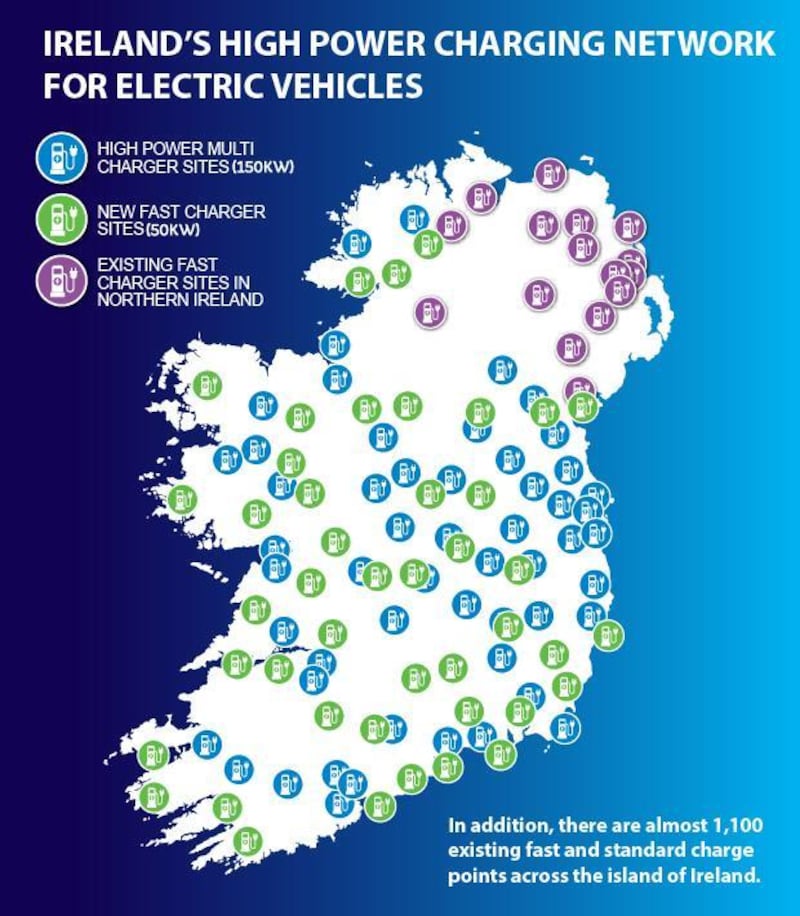Some €20 million is being invested in a network of high-powered electric vehicle charging points across the country.
The move is aimed at addressing “range anxiety”, the term used to describe concerns that electric cars cannot currently travel very far without having to be recharged.

A vastly improved network is also crucial given Government policy that fossil fuel powered vehicle sales will end by 2030.
More than 50 high-power ESB network charging hubs will be installed on motorways and national roads, the Department of Climate Action and Environment has announced.
It has published a provisional map of the planned network.
The high-power hubs will be able to charge between two and eight vehicles simultaneously and provide up to 100km of range power in as little as six minutes.
In addition to these, up to 50 locations will also see Standard 22kW AC chargers upgraded to 50kW DC fast chargers.
According to the department, this total network capacity will meet the requirements of hundreds of thousands of vehicles.
Confidence to switch
"This investment gives people confidence that they can make the switch," Minister for Communications, Climate Action & Environment, Richard Bruton, said.
“Now is the time. As well as providing a network of chargers, the Government also offers a number of financial supports to those thinking of changing their vehicle.”
Jerry O’Sullivan, deputy chief executive of the ESB, said the high-power hubs would enable “seamless EV travel across the island of Ireland”.
“This, in turn, will support the Government’s ambition to have more than 500,000 EVs on Irish roads by 2030.”
The most appropriate locations for charging points on motorways and national road networks is now being researched.
The sites will be identified using data on current charging point usage, traffic volume, accessibility, amenities and grid capacity.















